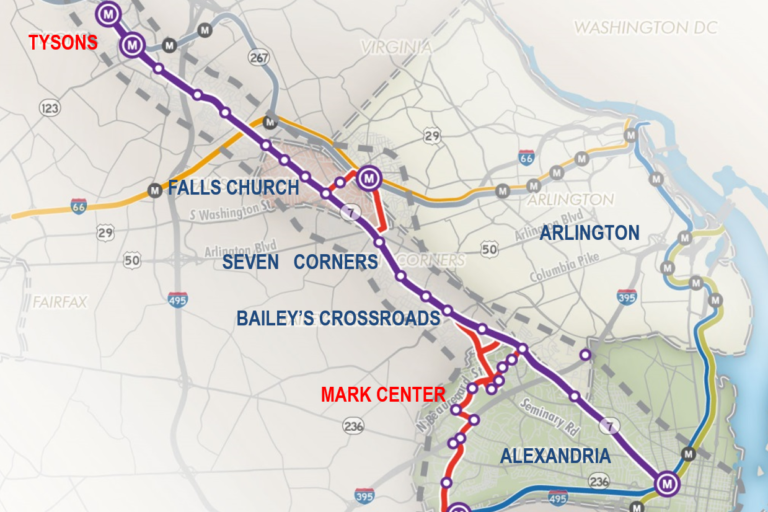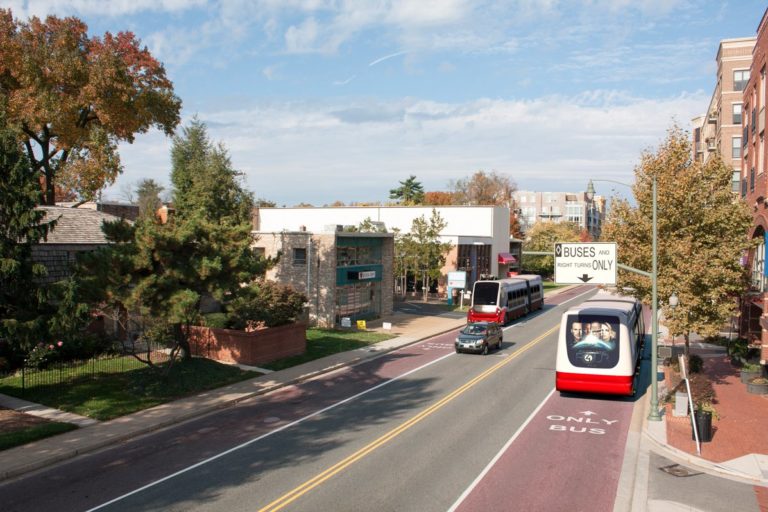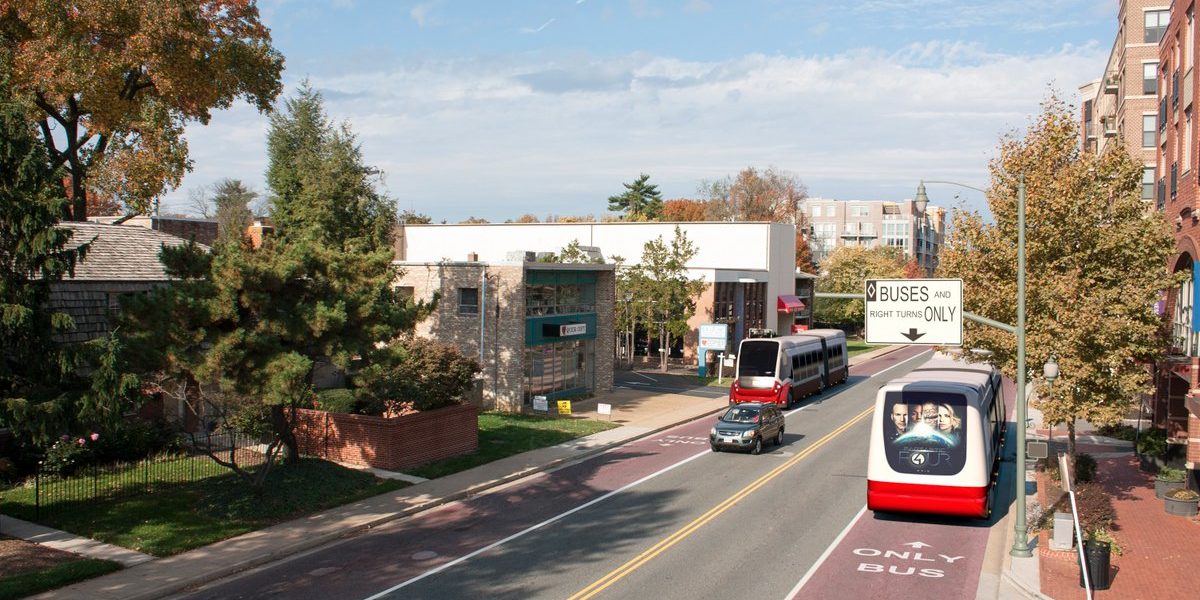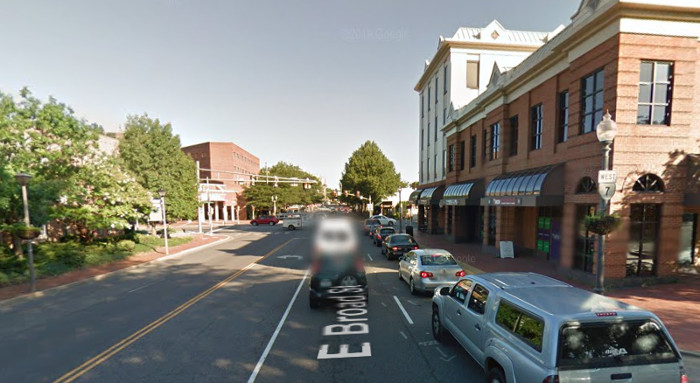Fairfax County and NOVA Transportation officials have been seeking a solution to the congestion on Route 7 for more than a decade. Road widenings are coming between Tysons and Loudoun County as part of an on-going VDOT study, but a more critical section of the corridor needing solutions is that between Alexandria and Tysons.
This segment supports nearly 200,000 jobs and over 100,000 residents, including the city of Falls Church. With transit funding becoming more constricted, and much of the fascination with streetcars waning, due to the limitations in the mixed-traffic line in DC, it is BRT that has become a focal point for rapid transit advocates.
That is exactly what the NVTC is recommending as the best solution for the important commercial corridor. NovaTransit.org also has a good information packed video regarding the need for rapid transit along Route 7. The analysis shows that BRT is a cost effective and quick to start means to address transit needs in the corridor. However, the negative of BRT is that often — once going through the community input, cost engineering, and political process — the R (rapid) in BRT is “value engineered” out, leaving the same mixed-traffic buses that do not provide any time savings to commuters.
That’s not to say that it happens everywhere. Take for instance the already popular Route 1 Metroway BRT which retains well conceptualized station locations, design, and dedicated lanes.

Where are the likely hiccups? The primary section of the project which concerns me is the portion through central Falls Church (between W&OD Trail and Seven Corners), where the road necks down to two lanes each way. There is no additional right-of-way to be garnered in this segment — much of the “old town” portion is built with limited setbacks. Will vehicle commuter sentiment for this segment — to not lose any vehicle lanes — force a mixed traffic alignment?
Another concern is the pull offs being planned to connect the Alexandria Mark Center, to East Falls Church, to Tysons. It wouldn’t make sense to skip these locations as these links provide the multi-modal network that helps grow transit access, but at the same time; how the buses would actually transition from Route 7 to these stops is critical. Each of these nodes could add as much as 15 minutes to travel time if inappropriately mixed into regular traffic.
There is a huge difference in viability between a system that can get you from Tysons to Alexandria in 30 minutes, versus one that would take over an hour. A system that would take over an hour, will see limited ridership, end up with lesser frequency, and ultimately end up in likely failure. Parking in these two nodes is fairly frictionless, and one can easily make that trip in an hour by car. For Route 7 BRT to work it must be rapid and not over-serving. At just around 10 miles, the goal should be at least a 20 mph pace including all stops.
The plans are still in their infancy, so we’ll need to follow up to see whether BRT is really going to be implemented, or if pressure from extraneous forces begin to dilute the idea of rapid transit on Route 7. The next public meeting on the concept in the Tysons area will be at Mary Ellen Henderson Middle School on June 9th, 7-9 PM.




